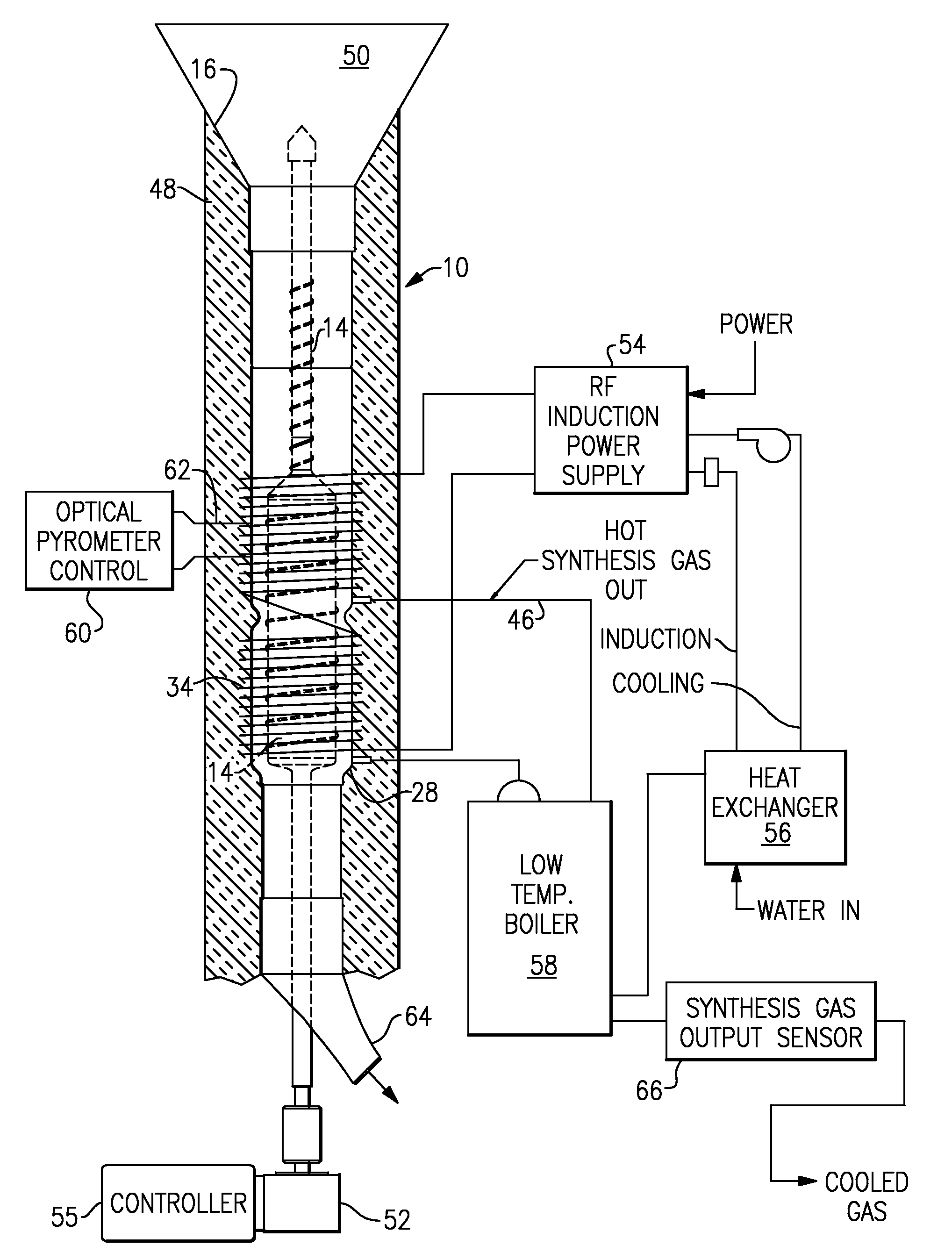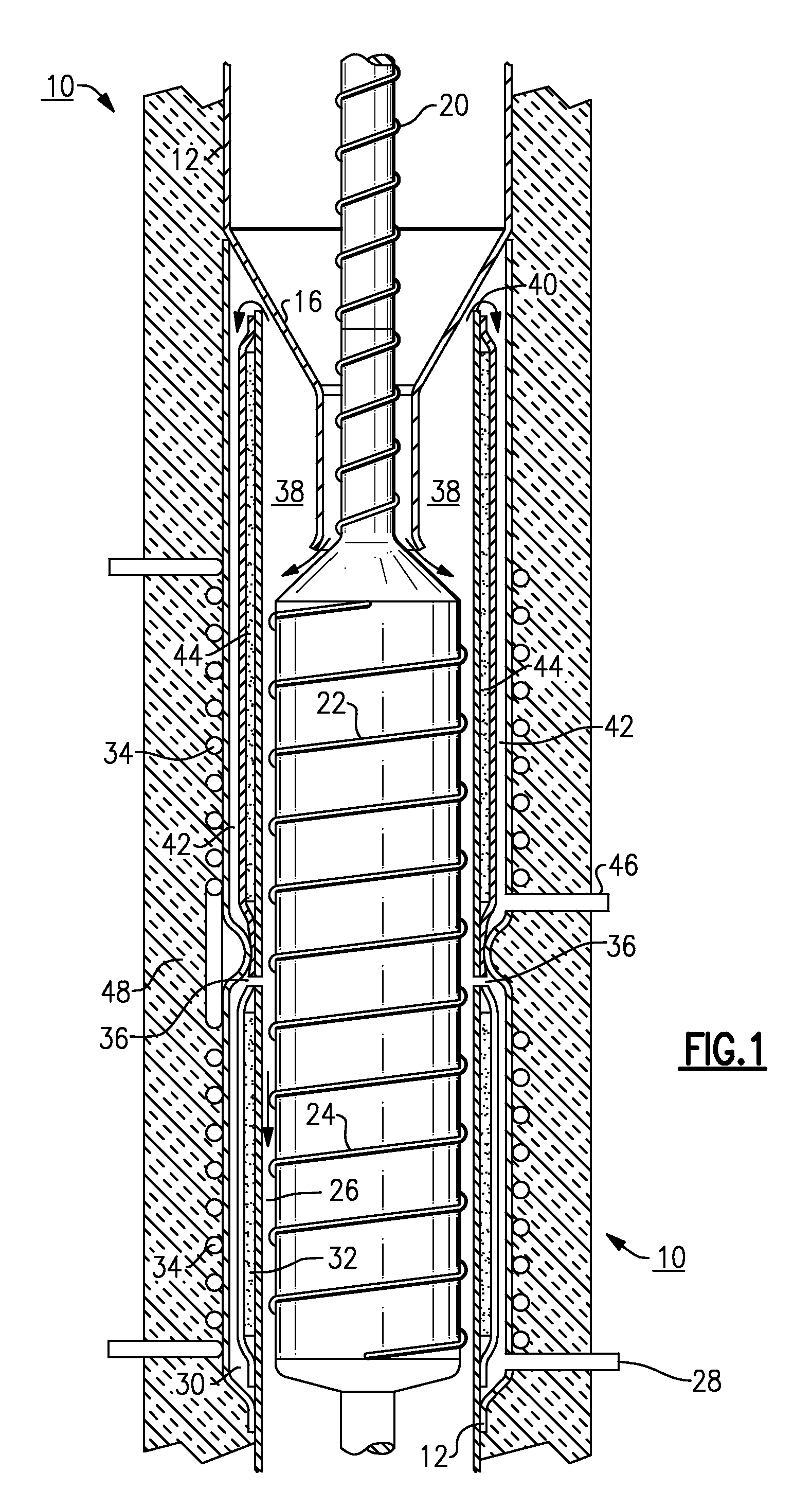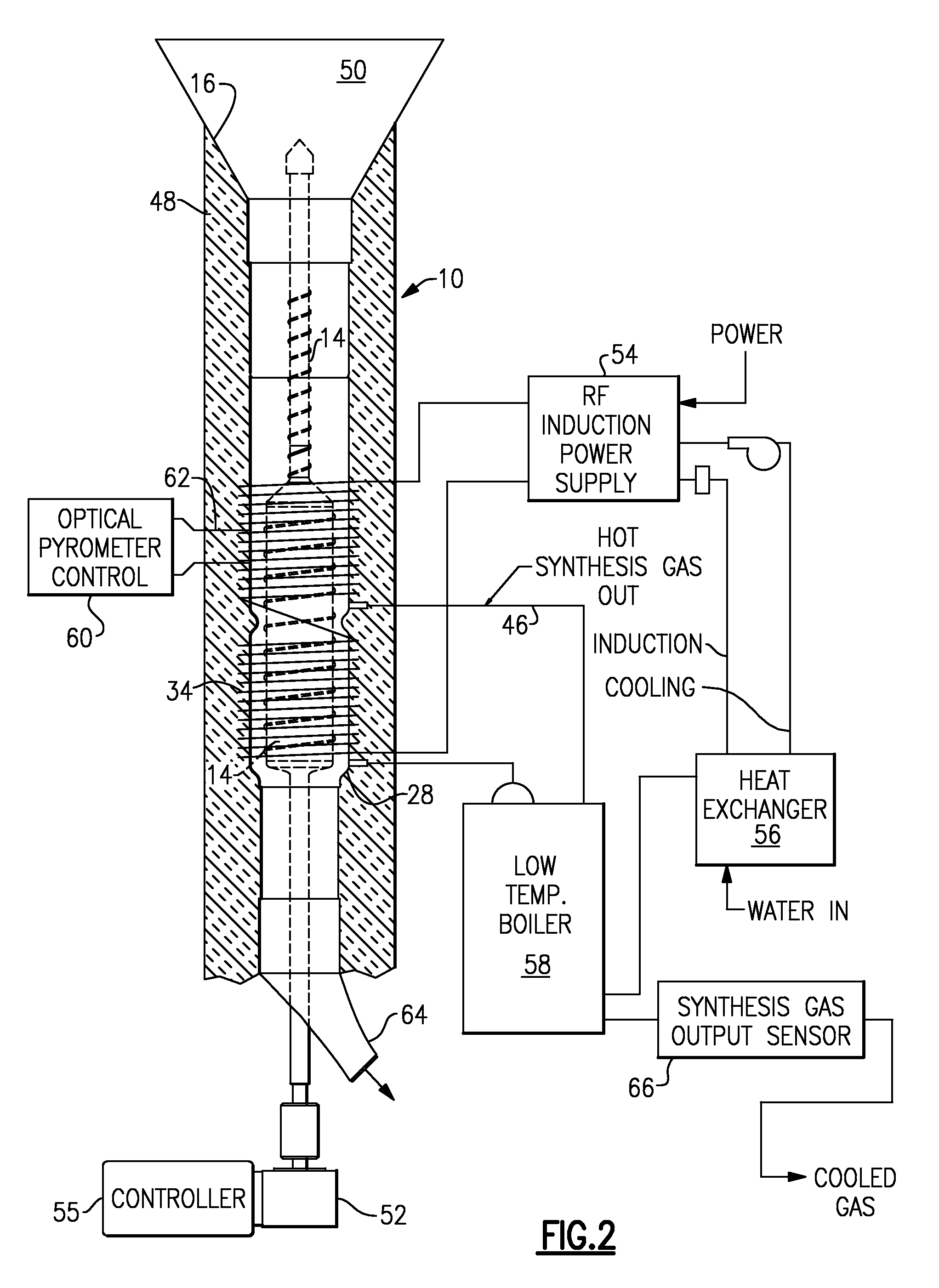Production of Synthesis Gas from Biomass and Any Organic Matter by Reactive Contact with Superheated Steam
a technology of biomass and superheated steam, which is applied in the direction of combustible gas production, gasifier mechanical details, sustainable manufacturing/processing, etc., can solve the problems of ineffective direct burning of biomass, large utilization of co-produced heat, and difficult burning, so as to improve the efficiency of the reactor
- Summary
- Abstract
- Description
- Claims
- Application Information
AI Technical Summary
Benefits of technology
Problems solved by technology
Method used
Image
Examples
Embodiment Construction
[0039]With reference to the Drawing, and initially to FIG. 1, a Flash Hydropyrolysis™ reactor 10 is shown for carrying out a continuous or batch process generation of synthesis gases from biomass matter of the type described hereinabove. The biomass is chopped when harvested to a size standard, and is allowed to pre-dry. The reactor is formed of a generally tubular quartz envelope 12, which houses a rotor 14 as shown which rotates to bring the biomass particles into contact with the superheated steam as explained. The upper end of the envelope can be much higher as indicated by the break lines, and the inlet for bringing in fresh biomass is not shown here.
[0040]There is a neck or funnel 16 surrounding a thinner portion 18 of the rotor, with the rotor 14 widening beneath the lower mouth of the funnel 16. The bottom of the vessel or envelope 12 extends down, as indicated at the lower break lines, and can receive a considerable volume of the ash. Threads, vanes or screws 20, 22, 24 are...
PUM
| Property | Measurement | Unit |
|---|---|---|
| temperature | aaaaa | aaaaa |
| temperature | aaaaa | aaaaa |
| temperatures | aaaaa | aaaaa |
Abstract
Description
Claims
Application Information
 Login to View More
Login to View More - R&D
- Intellectual Property
- Life Sciences
- Materials
- Tech Scout
- Unparalleled Data Quality
- Higher Quality Content
- 60% Fewer Hallucinations
Browse by: Latest US Patents, China's latest patents, Technical Efficacy Thesaurus, Application Domain, Technology Topic, Popular Technical Reports.
© 2025 PatSnap. All rights reserved.Legal|Privacy policy|Modern Slavery Act Transparency Statement|Sitemap|About US| Contact US: help@patsnap.com



